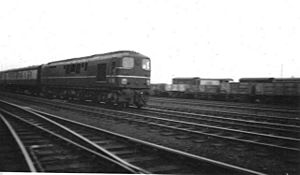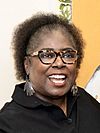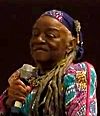British Rail Class D16/2 facts for kids
Quick facts for kids British Rail Class D16/2 |
|
 |
|
| 10203 approaching Bletchley, 1954 | |
| Power type | Diesel-electric |
|---|---|
| Builder | BR Ashford Works (2), Brighton Works (1) |
| Order number | SR Order 3441 |
| Build date | 1950 (10201/10202) 1954 (10203) |
| UIC classification | 1Co'Co1' |
| Gauge | 4 ft 8 1⁄2 in (1,435 mm) |
| Wheel diameter | Driving: 3 ft 7 in (1.092 m) Idling: 3 ft 1 in (0.940 m) |
| Minimum curve | 4.5 chains (91 m) |
| Wheelbase | 55 ft 6 in (16.92 m) |
| Length | 63 ft 9 in (19.43 m) |
| Width | 9 ft 3 in (2.82 m) |
| Height | 13 ft 1 in (3.99 m) |
| Locomotive weight | 133 long tons (135 t) |
| Fuel capacity | 1,150 imp gal (5,200 L; 1,380 US gal) |
| Prime mover | English Electric 16SVT |
| Traction motors | English Electric 526A, 6 off |
| Top speed | 90 mph (140 km/h) |
| Power output | 10201/2: 1,750 bhp (1,300 kW) 10203: 2,000 bhp (1,500 kW) |
| Tractive effort | 10201/2: 48,000 lbf (213.5 kN) |
| Train heating | Steam generator |
| Train brakes | Vacuum |
| Career | British Railways |
| Number | 10201–10203 |
| Axle load class | RA 6 |
British Railways Class D16/2 was a class of prototype diesel locomotive built by BR at Ashford Works and introduced in 1950–1951, with a third example being introduced in 1954. They had been designed by Oliver Bulleid for the Southern Railway before the 1948 nationalisation but did not appear until after nationalisation. The diesel engine and transmission were supplied by the English Electric company but the Bulleid influence was obvious. The box-like body style closely resembled Bulleid's electric locomotives and was quite different from the usual English Electric style, typified by British Rail Class D16/1.
Images for kids
Black History Month on Kiddle
Contemporary African-American Artists:
 | Janet Taylor Pickett |
 | Synthia Saint James |
 | Howardena Pindell |
 | Faith Ringgold |

All content from Kiddle encyclopedia articles (including the article images and facts) can be freely used under Attribution-ShareAlike license, unless stated otherwise. Cite this article:
British Rail Class D16/2 Facts for Kids. Kiddle Encyclopedia.

